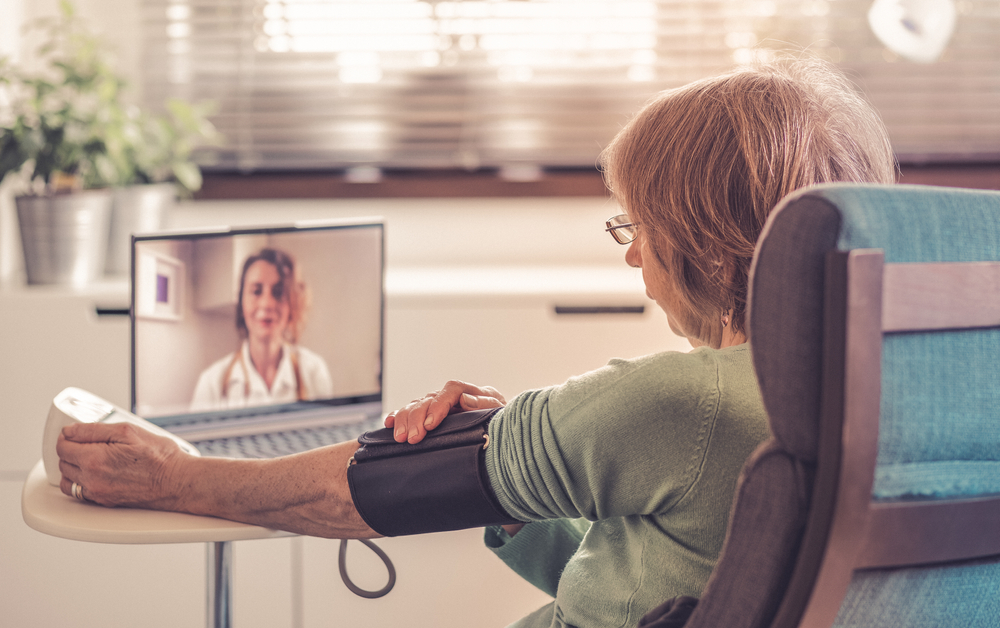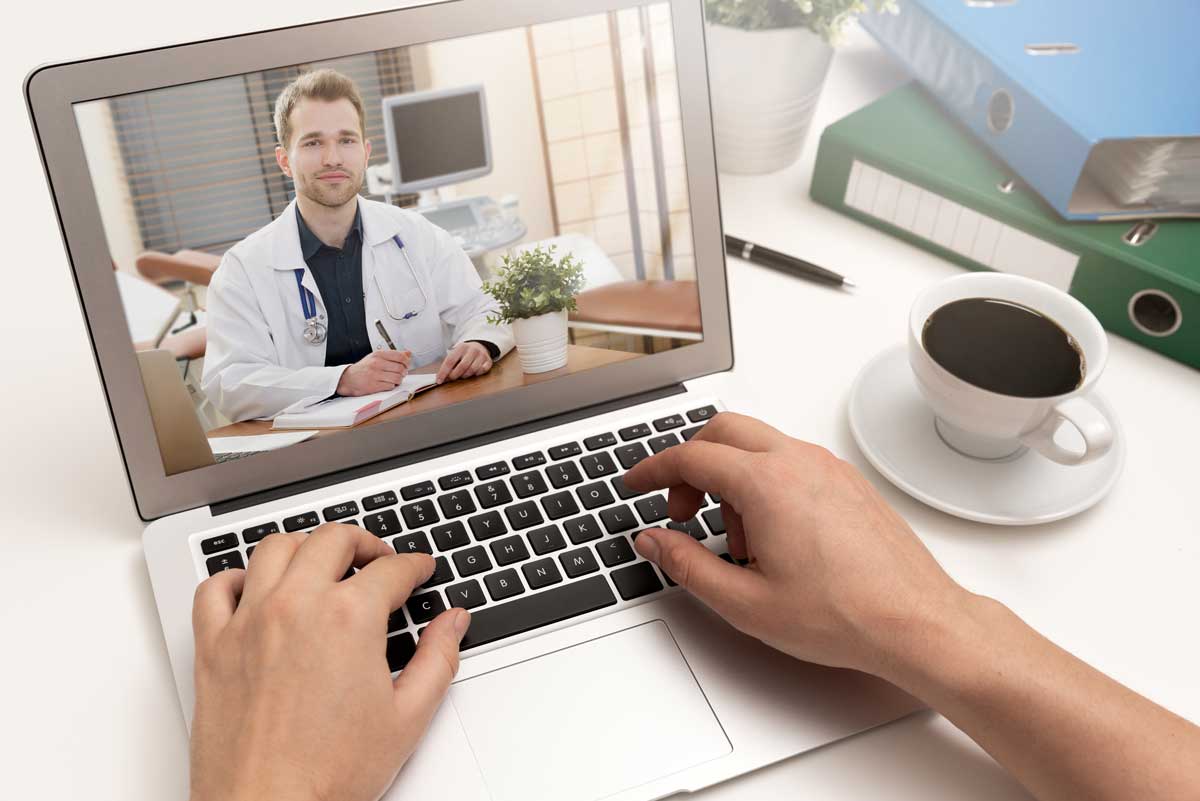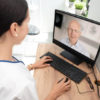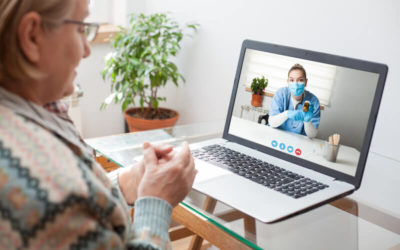Telemedicine is the ability to provide healthcare without being in person and is the overall umbrella of combined technology that facilitates healthcare. It’s accessible through established telemedicine companies.
Medical visits and medical diagnosing are most effective with in-person visits between patients and doctors. Not everyone can get to the doctor easily or during regular business hours. Those who live in remote locations, people who have long work hours, or chronic medical conditions sometimes experience extra challenges getting to their doctor for important in-person visits. These individuals and those who want more convenience in accessing their health care may wish to take advantage of telemedicine services.
Using technology to assist these patients remotely is a huge help. Assistance is available over the phone, through video conferencing, or via remote monitoring, specialized software, and or wearable or specialized mobile medical devices.
The Difference Between Telemedicine and Telehealth
Telemedicine technology has evolved over the years. Telemedicine technology shares many things in common with telehealth technology, although they are not the same.
Think of telehealth as a wide net or a broad paintbrush. When put into action, it covers a wide area. For example, common uses for telehealth technology are for notifying the public of contagious disease outbreaks or broadcasting other important health-related matters. Governments, hospital administrations, and nonclinical professionals use this type the most.
Telemedicine focuses more on the individual and the related aspects of a person’s healthcare needs. Doctors, hospitals, and clinics are more inclined to the telemedicine technology more often than not.
Telemedicine services dive into and assist with:
- the individual’s health history concerns,
- the individual’s current state of overall health,
- their medical diagnosis,
- coordinated care between their chosen clinic, and
- communications between the individual and their doctor.
The right telemedicine software does all of this while interfacing with other particular health care providers the individual may need. This is all done remotely, without necessarily having the patient in the office.
How is Telemedicine Helpful?
Telemedicine technology relieves the burden of traveling to the doctor’s office for care. One established form of telemedicine is speaking to patients by phone and providing detailed instructions on what to do next. This is true for communicating with on-call doctors, after-hours specialists, or even dialing a nurse’s hotline.
Without having to step into a medical provider’s office, an individual:
- can consult with a medical professional regarding injuries,
- explore the symptoms of illness
- renewal of prescriptions, and more.
Today, medical professionals and patients interact the best with telemedicine software that makes liberal use of two-way video, sharing of files, protected documents, recorded video, or even photos.

Two Types of Telemedicine: Software and Devices
There are three types of telemedicine software categories. Solutions will usually fall into:
- store-and-forward telemedicine,
- real-time monitoring, and
- remote patient monitoring.
These categories may seem complicated and mysterious, but they aren’t. It’s essential to understand the unique differences between the three when trying to choose the best telemedicine software for your needs.
Store-and-forward telemedicine
Store-and-forward telemedicine takes pieces of patient information, stores it in a secure location, and allows a healthcare provider to view things like records or photographs, all without having to have the patient appear in-person, over the phone or video, at a specified time. These stored items make it easy for primary care providers and specialists to collaborate on a patient’s needs without needing the patient to be in person.
Real-time telemedicine
One key difference between real-time telemedicine and store-and-forward is that the patient needs to communicate with the medical provider real-time. This happens through chat rooms, video conferencing, and phone calls. No matter which method is in use, the doctor and patient are both present and actively communicating simultaneously.
Some studies indicate that remote visits with two-way video are potentially more cost-effective but just as medically practical as in-person appearances.
Remote patient monitoring
The rise and advent of wearable medical devices allow doctors and clinicians to send data from the devices to the clinic with little to no intervention from the patient. Sometimes this is called “home telemedicine.”
Specific devices may provide clinicians things like vital signs, heart rate per minute, glucose levels, the last time medicine was absorbed into the body, physical movement the patient is making, how often and how much activity has taken place (like steps taken), and more. These devices have been used with patients who might be recovering at home or who actively experience chronic health conditions.
This setup allows medical providers to catch early warning signs faster, check in with their patients more often, and reduce exposure risks with in-person visits.
Telemedicine Software Features
Your chosen telemedicine software should have a few core features
Security
The software should be 100% secure and HIPAA compliant. Telemedicine software saves, shares, and transmits patient health data. General video-conferencing software, like Skype, should not be used.
Easy to Use
The telemedicine user experience should be fluid, smooth, and intuitive. The less time it takes to figure out how to use it, the happier doctors and patients will be.
Reimbursement
The software needs to thoroughly document two-way video visits for patients to potentially receive reimbursement for telemedicine visits, depending on their state.
Patient Records
The software should allow the ability to import patient notes from patient visits. This keeps all patient records in one place and reduces manual syncing of records maintained (one for in-person visits and one for virtual visits).
ePrescribe
Telemedicine software should allow a doctor to prescribe medications electronically without calling or contacting the pharmacy.
Minimal Setup
Telemedicine software solutions come with a wide variety of hardware and software requirements. The software you choose should be easy to get started with minimal configuration.
Cost
With the ability for telemedicine solutions to improve your doctor-patient relationships, contact Seecure today for a free trial and consultation on how to get your practice up and running with telemedicine capabilities.







